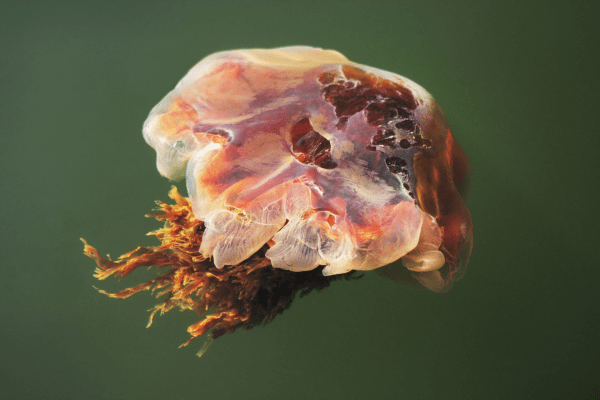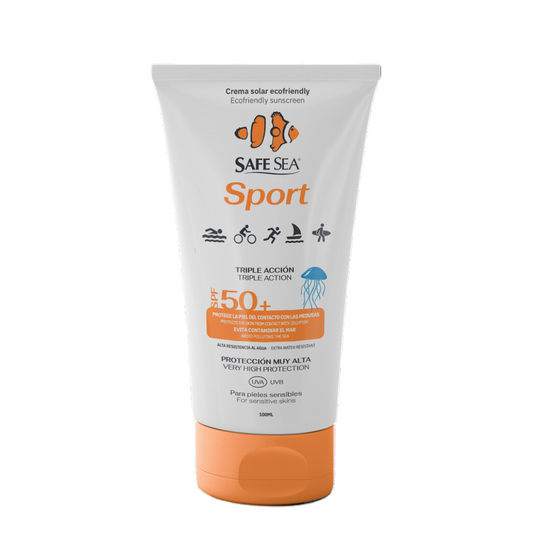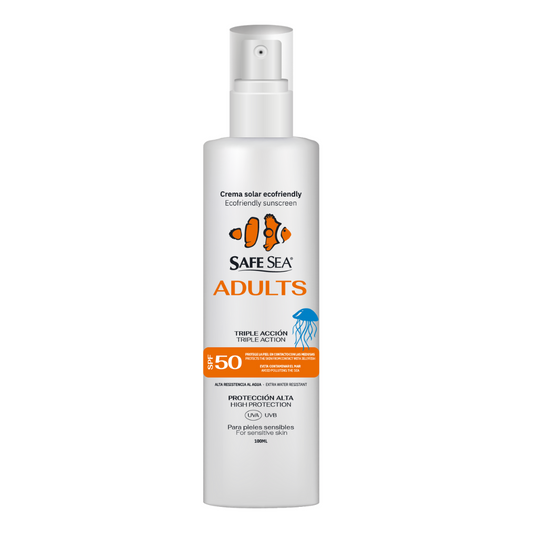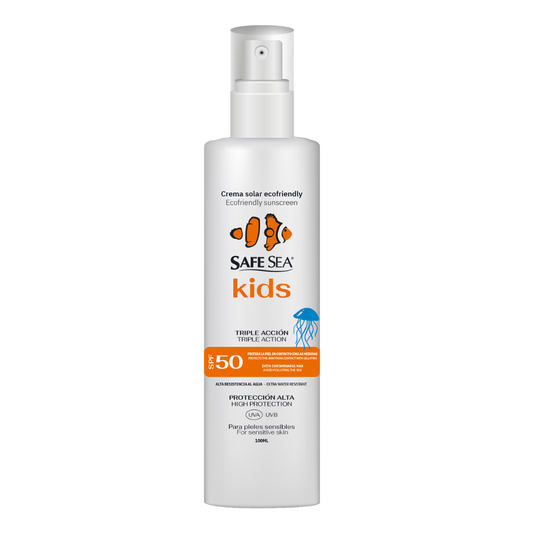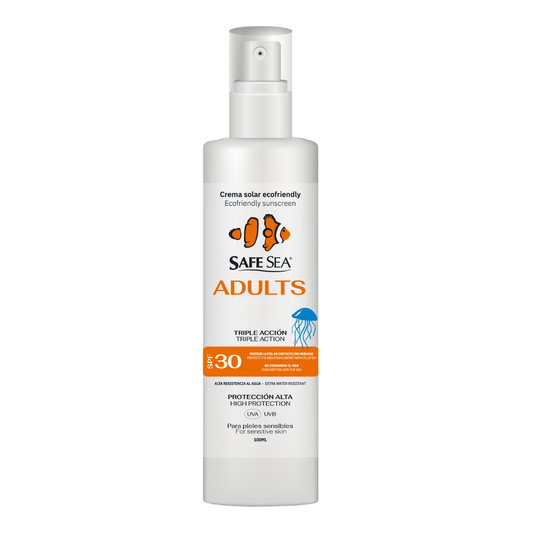Lion's mane jellyfish: the largest species in the world

Have you ever heard of the world's largest jellyfish? It is known as lion's mane jellyfish (Cyanea capillata). Its umbrella - or bell - can reach up to 2 meters and its tentacles can reach up to 30 meters in length. These dimensions vary according to their location, with the most "corpulent" species occurring in the Arctic zone. Its common name is due to the similarity of the appearance of the tentacles with the mane of a lion: the color of the youngest individuals is tan orange, but as they age it can turn reddish. The color of the bell varies between pink, golden or brownish violet.
Curiosities of the lion's mane jellyfish
Where does the lion's mane jellyfish live?
This species of jellyfish is common in cold marine waters. Its greatest concentration of specimens is found in the Arctic Ocean and throughout the northern regions of both the Atlantic and Pacific Oceans.
It is a species that does not usually tolerate warm waters, so it is not common to find it to the south. It is usually found in the Atlantic zone of Canada and the United States, Norway, the Baltic Sea and the English Channel. As well as in the eastern part of Great Britain. And, in general, in northern waters. Although the presence of jellyfish similar in appearance to the lion's mane has been reported in Oceania, it remains to be confirmed whether or not it is the same species.
Therefore, the world's largest jellyfish does not live in waters bordering Spain. These jellyfish inhabit a zone known as abyssal or abyssopelagic. This is a level of ocean space located between 3,000 and 6,000 meters deep. The lion's mane jellyfish swims freely and feeds in this environment characterized by cold, lack of nutrients and the total absence of sunlight. Although when it is reaching the decline of their life they prefer to move to shallower waters.

The highest concentration of lion's mane jellyfish is found in the Arctic Ocean and throughout the northern regions of both the Atlantic and Pacific Oceans.
What does the lion's mane jellyfish eat?
If you are curious about this marine animal, you have probably wondered at some point what jellyfish eat. This cnidarian mainly feeds on fish, which it captures with its tentacles and stuns by inoculating a toxic substance through the nematocysts. It can also consume other smaller jellyfish - such as comb jellyfish - and zooplankton.
Do you know what zooplankton -or animal plankton- is? This is the name given to the group of living organisms belonging to the Animal Kingdom that float wandering within the first 200 meters of depth of many of the planet's aquatic ecosystems.
Animals that are trapped inside their almost transparent tentacles are injected with the stinging cells full of venom that they have inside. The truth is that this species resorts to this method to capture its prey because its ability to move is limited. Long chases are not possible. It can move vertically and, to a lesser extent, horizontally. It always depends on the help of marine currents.
How does this giant cnidarian reproduce?
Lion's mane jellyfish can use either of the two basic modes of reproduction for the creation of new organisms: sexual and asexual. This species is capable of producing both eggs and sperm on its own, so they do not necessarily need a partner to reproduce.
The mating season occurs in summer and autumn, when the youngest specimens emerge.
Did you know that the lion jellyfish has a very high mortality rate? That's right: of the large number of eggs that emerge each year, less than half survive a few days after hatching. Because of factors related to food supplies and water temperature.
Although some jellyfish are considered to live forever - as in the case of Turritopsis nutricula - they are still subject to the dangers of nature. And most of them die from disease, predators, storms, pollution, changes in water temperature.
Is the sting of the world's largest jellyfish dangerous?
The sting of the lion's mane jellyfish is not fatal in most cases for humans, although they can be very painful and bring with them rashes, itching and burning. In some extreme cases - especially in children and adults with diseases - this contact can be fatal due to the amount of venom absorbed through the skin, and can result in death by suffocation or severe allergic reaction.
The anti jellyfish sunscreen prevents the sting of the largest jellyfish in the world, as well as other species of medium and high danger such as: Sea Nettle or Radiate Acalefo (Chrysaora), Rhopilema (Rhopilema nomadica), Pelagia nocticula, Cubomedusa (Chiropsalmus quadrigatus), Cubomedusa (Chiropsalmus quadrigatus f), Portuguese Caravel (Physalia), Sea wasp (Carybdea), Cross jellyfish (Olindias), Blue Acalefo (Rhizostoma pulmo), Sea louse (Lunuche ungulate).
Widely used by professional open water swimmers, who train daily in the open water to reach the podium of relevant OWS events, such as Marnaton eDreams.

Last edition of Marnaton eDreams Barcelona 2022.
It is also recommended by swimmers of solidarity strokes as Alberto Lorente, popularly known as El Hombre de las Aguas. Who in recent years has achieved important challenges against childhood cancer.
The "world ranking" of ocean giants
Lion's mane jellyfish vs. blue whale
Which of these two marine animals do you think is bigger? Although at first it may seem unbelievable, the largest specimen of the lion's mane jellyfish is more than two meters bigger than the blue whale. The blue whale reaches a dimension of 33 meters in length, while the largest jellyfish in the world measures more than 36 meters, counting the bell and tentacles.
The longest known specimen of this species dates back to 1870 and was found off the coast of Massachusetts. Where it was recorded with an umbrella of 2.3 meters in diameter and tentacles reaching 36.5 meters in length.
Far below the blue whale is the sperm whale (24 meters) and the whale shark (10 meters).

